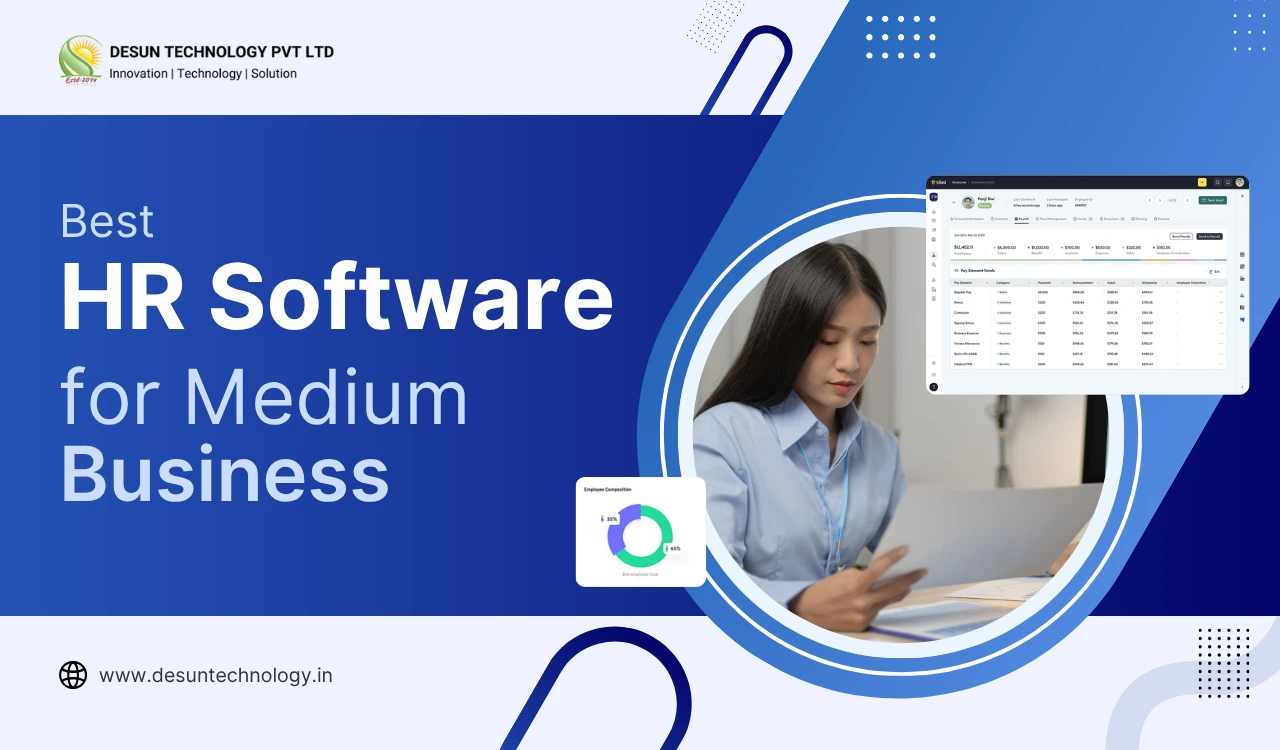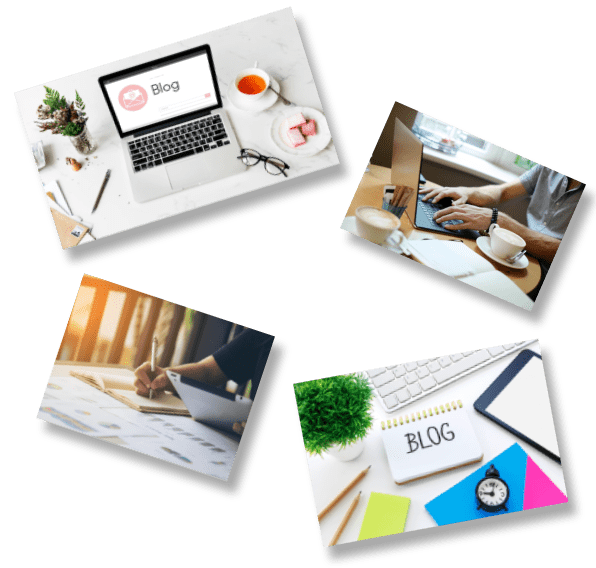
Best Human Resources Management Software for Medium Business
Finding the best HR software for medium business is a key step for any growing company. As you move from a small to a medium-sized team (around 100 to 1000 employees), things can get chaotic. This awkward stage means you can’t rely on old, manual methods like spreadsheets anymore.
When your HR team is buried in paperwork, like tracking salaries, time off, and employee details, they don’t have time for important big-picture work. This includes finding great new hires and planning for your company’s future. Handling hundreds of complex employee records becomes a huge challenge without the right tools.
That’s why having the right HR software is no longer just a good idea; it’s a must-have. The right system helps your business grow smoothly, stay on the right side of the law, and provide a modern experience that your employees will appreciate.
Why HR Software is Important for Medium Businesses

Over the years, HR in small companies can manage with basic equipment, but a medium-sized business faces the sheer volume and sensitivity of data, in a medium-sized business-inclined confidential wage details, performance review, and complex advantage Registration, fundamentally risky and unstable. This analog approach.
The Pitfalls of Manual HR Administration
Risk of non-transport: When companies grow, they quickly cross different thresholds for regulatory requirements (eg, FMLA, ACA, state and local workover). Hour manual tracking, balance, and legal documents are a recipe for expensive errors and nice. An integrated system makes automatic management and ensures regulatory farming, providing detailed audit tracks.
Lack of real-time data and insight: Strategic business decisions on the number of employees, budget, and organizational restructuring are heavily interrupted by fragmented data. If data and appearance data are different from the payroll, HR managers cannot generate meaningful reports of a major matrix, such as employee turnover or cost mirage. The modern HR leader requires sophisticated HR analysis and reporting skills to inform strategic, computer-driven decisions.
Scalability failure: Manual procedures do not scale linearly. Hiring 100 new employees means more cost for onboarding and profit administration. A dedicated HR information system (HRIS) is designed to automate these tasks so that the HR team can manage 500 employees with the same efficiency as they can manage 50, which enables development without Mass overhead.
Poor employee experience: In a competitive labor market, employees’ experience begins with effective HR procedures. To use a clunk, paper-based PTO request system or call HR for a simple wage stub compensation, with employee morale and engagement. Modern solutions offer a streamlined staff self-service portal, which is an important factor in attracting and maintaining top talent.
The Non-Negotiable Core Features of HR Software for Medium Businesses

When evaluating the best HR software for medium businesses, the focus should first be on the core functionality that anchors your administrative basis. These important features transform the HR department from a cost center to an efficiency engine.
1. Core HRIS and Employee Database Management
It is a single source of truth for all employee data. This employee centralizes items, sensitive documents, emergency contacts, organizational charts, and job history in a safe place. A strong core HRI should offer adaptable fields and strong security protocols to ensure data security and compliance with global privacy standards (such as GDPR or CCPA). Seriously, look for systems that automatically update data to all connected modules to maintain integrity.
2. Integrated Payroll Management
For mid-sized businesses, an integrated payroll system is essential. Managing wages manually or through disconnected external tools increases the risk of costly errors—particularly in complex areas like commissions, overtime, and varying regional tax regulations. The ideal solution automates payroll processing by seamlessly integrating time and attendance data, benefit deductions, and statutory compliance checks, ensuring accuracy every pay cycle. This automation not only enhances compliance but also saves valuable time for growing companies.
3. Time, Attendance, and Leave Management
Tracking employee working hours, PTO periodizations, and sick leave in a medium-sized workforce without a system is functionally impossible and legally risky. Proper software offers flexible Clock-in/OUT options, geo-fencing for external and field teams, and automated approval workflows for time-off requests. This openness is crucial to effective work management and helps leaders to understand and avoid costly violations of compliance with unpaid or excessive overtime.
4. Benefits Administration
Benefits Registration and management are a high-risk administrative field with high risk. Distributorship modules should allow employees to easily record and change the health, dental treatment, vision, and pension plans during open registration using an intuitive interface. The software must be integrated with the main distribution to ensure simple, secure data transfer and reduce manual data entry from the HR team, which often introduces expensive errors.
Strategic Features: Moving Beyond Administration
When the foundation of Core HR becomes automatic, the best HR software for medium businesses should offer strategic equipment that promotes business development and cultivates competitive benefits in the talent market. These are properties that increase the simple administrative equipment for a real human resource management system (HRMS).
1. Performance and Goal Management
Medium-sized companies must go beyond the old, annual performance reviews for a system that supports continuous response. The ideal system has continuous performance management through devices such as 360-degree feedback, regular check-ins, and an adaptable target-setting framework (such as OKR). This functionality ensures that individual employees’ performance is directly linked to the company’s goals, which guarantees adaptation and effective contributions to strategic development. This module is necessary for active talent management.
2. Recruitment and Applicant Tracking System (ATS)
As a growing business, the speed of your work is dramatically increasing. An underlying or originally integrated applicant is important for controlling the tracking system (ATS). This module handles the entire talent life cycle: Posting jobs to many boards, skilled screening of candidates, planning interviews, and transferring status updates. A strong ATS improves the experience of the overall candidate and helps HR teams to analyze the recruitment pipeline, ensuring that they quickly and efficiently attract the right quality of talent.
3. Employee Onboarding and Offboarding Workflows
The first few weeks are important for the success and storage of new works. The correct HR software automatically on board the workflow, varies, offers letters, and collects e-hosts for compulsory compliance training and equipment requests. This structured, inviting process reduces the time-to- product, and HR cuts the paperwork significantly. Similarly, automatic control of offboarding ensures compliance, recovery, and safety of Swift Asset when an employee leaves.
4. Comprehensive Employee Self-Service (ESS)
Modern employees hope to manage their professional administrative functions digitally. Employee Self-Service (ESS) portal allows employees to enroll in benefits without the need to update personal information, check PTO balance, access payroll, and contact MR. This facility reduces administrative burden on the HR department significantly and releases them for more strategic work, and provides more control and commitment to employees. A high-quality mobile application for the ESS portal is now a requirement that is not converted to today’s distributed and hybrid workforce.
How to choose the best HR software for medium business

Choosing the right HR software means finding one that fits your company’s specific needs. Don’t choose a system that is too basic for a small business, as it will not be able to handle your growth. Also, avoid systems that are too large and complex, as they will have confusing features and be too costly. The key is to find a system that is the right size for you.
Define scalability requirements: project your headcount growth over the next five years. Does the platform have a pricing model that supports this growth without insurmountable jumps in cost? Does it actually offer scalable solutions that can handle multiple states or global wages when planned for expansion?
Evaluate Integration Capacity: Your HRI cannot work in a silo. In order to ensure a single source of truth for all commercial data, you must be integrated with your existing accounting software (such as QuickBooks or SAP), such as EN-ON, single order (SSO) Suppliers, and other special equipment (Learning Management System or CRM).
Consider the user experience (UX): A complex, non-CO function system will lead to a low adoption rate, and force employees and managers back to confidentiality, but disabled, manual procedures. Emphasize the live demo and ideally a test period for the HR team to test the user interface (UI) and employees’ self-service (ESS) functionality well.
Priority for implementation and support: A complex HRIS implementation requires specialist guidance. Evaluate the seller’s implementation method, their available training resources, and their ongoing customer help structure. For a moderate business, dedicated, responsible support is far more valuable than the cheapest monthly value.
Partnering for Success: How Desun Technology Transforms HR
Switching to a new HR software can be a big challenge for medium business. Moving employee data, changing how people work, and setting up the new system is often the hardest part. This is where expert help becomes very important.
Desun Technology makes this change easy. Their team of experts provides guidance and strong support to set up your new HR solution with as little trouble as possible. They will study your company’s unique structure and then build it directly into the new software.
They do more than just install the program; they set it up to fix your specific problems. This can include creating a custom review process for employees or setting up rules for time-off requests.
Because Desun knows HR systems inside and out, they help you avoid common mistakes. This means your staff will learn the new system faster, and your company will see the benefits of your investment much sooner.
Conclusion
To succeed in today’s competitive business world, you need to plan for the future. A key part of this is changing how you manage your team. Instead of just reacting to problems, you should use data to make smart decisions.
Buying good HR software for a medium-sized business is a smart move. It lets your HR team spend less time on paperwork and more time on important work. This includes improving company culture, training employees, and planning for the future. These are the things that will make your business stand out from the competition.
By making this digital change, your workplace will become more efficient, organized, and ready for the future. Using strong technology platforms is the best way to become a leader in your industry.









